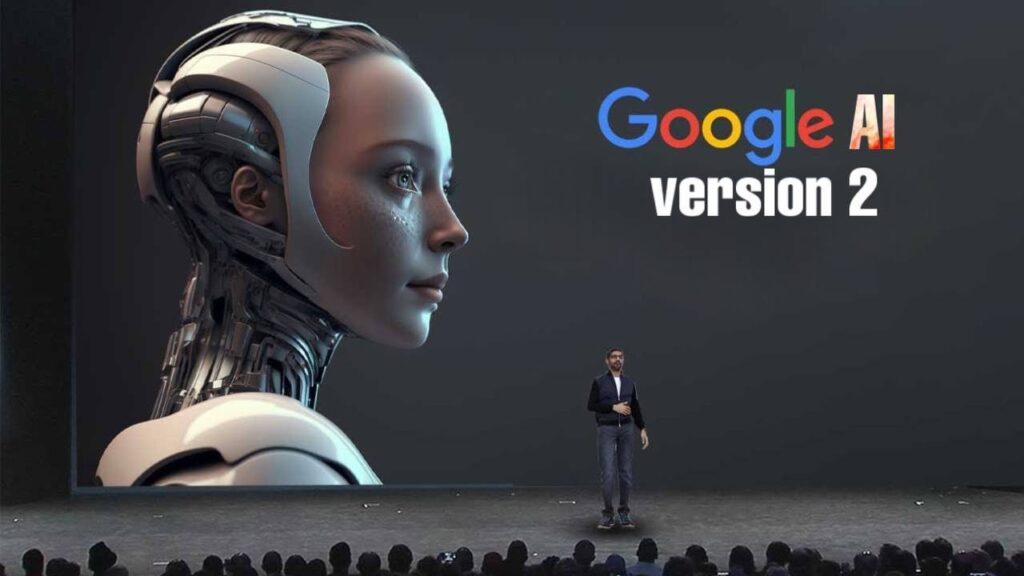
Google’s experimental conversational AI chat service, Google Bard is intended to function similarly to ChatGPT, with the main distinction being that Google’s service will obtain its data from the internet.
Bard, like most AI chatbots, can code, solve math questions, and assist you with your writing needs.
When was Google Bard announced?
Sundar Pichai, CEO of Google and Alphabet, announced Bard on February 6 in a statement. Despite the fact that Bard was a completely new concept, the AI chat service was driven by Google’s Language Model for Dialogue Applications (LaMDA), which was unveiled two years previously.
How does Google Bard work?
Google Bard is now powered by Google’s very own and most advanced large language model (LLM) PaLM 2.
PaLM 2 is a more advanced version of PaLM, which was released in April 2022 — will allow Bard to be much more efficient and to perform at a higher level.
Because it required less computational resources and could be scalable to more users, the first version of Bard employed a lightweight model version of LaMDA.
LaMDA is based on Transformer, Google’s neural network architecture, which it created and released open-source in 2017. According to Google, GPT-3, the language model on which ChatGPT operates, was also created on Transformer.
READ ALSO: Zoho Integrates ChatGPT with Zia, Strengthening Generative AI Capabilities
Google’s decision to employ its own LLMs, LaMDA and PaLM 2, was a daring one because some of the most popular AI chatbots right now, such as ChatGPT and Bing Chat, use a language model from the GPT series.
Who has access to Google Bard?
At Google I/O, the tech giant announced there would no longer be a waitlist for Bard, meaning it would be open to the general public.
Google Bard’s previous waitlist opened up on March 21, 2023, and the tech giant granted access to limited numbers of users in the US and UK on a rolling basis.
What languages is Bard available in?
At Google I/O, Google announced that Bard will support Japanese and Korean, and is on track for supporting 40 more languages soon.
Does Google include images in its answers?
Yes, Bard was modified in late May to incorporate photos in its responses. The images are collected from Google and displayed when you ask a question that would be better answered with a photo.
For example, when I asked Bard, “What are some of the best places to visit in New York?” it responded with a list of several places, each with a photo.
What is the controversy around Google Bard?
Google’s Bard had a rough launch, with a demo of Bard delivering inaccurate information about the James Webb Space Telescope (JWST).
At launch, Google tweeted a demo of the AI chat service in which the prompt read, “What new discoveries from the James Webb Space Telescope can I tell my 9-year-old about?” Bard replied: “JWST took the very first pictures of a planet outside of our own solar system.” People quickly noticed that the output response was factually incorrect.
“This highlights the importance of a rigorous testing process, something that we’re kicking off this week with our Trusted Tester program,” said a Google spokesperson to ZDNET in a statement.
The actual performance of the chatbot also led to lots of negative feedback.
Bard also failed to answer simple inquiries, had a higher wait time, did not automatically incorporate sources, and paled in contrast to more established competitors, according to ZDNET. In comparison to ChatGPT and Bing Chat, Google CEO Sundar Pichai described Bard as “a souped-up Civic.”
Prior to the publication of Bard, Google’s LaMDA was also criticized. According to Tiernan Ray of ZDNET, shortly after the publishing of LaMDA, former Google developer Blake Lemoine revealed a document in which he suggested that LaMDA might be “sentient.” This debate died down once Google disputed the claim and placed Lemoine on paid administrative leave before firing him.
Google’s transition from LaMDA to PaLM 2 should help alleviate many of Bard’s present problems.
Why did Google decide to unveil Google Bard now?
Let’s go back to November 30, 2022, when ChatGPT was first released. ChatGPT had over one million users less than a week after its inception. According to a UBS investigation, ChatGPT has become the fastest-growing ‘app’ of all time. Other digital firms, especially Google, observed this success and wanted in on the fun.
Microsoft presented a new AI-improved Bing in the same week that Google debuted Bard in February 2023, which operates on a next-generation OpenAI LLM tailored exclusively for search.
What other AI services does Google have?
The search engine giant has created further AI services that have yet to be made public.
When it comes to AI products, the tech giant normally treads gently and does not release them until it is confident in their effectiveness.
For example, Google has created Imagen, an AI picture generator that, when released, might be a wonderful alternative to OpenAI’s DALL-E. Google also has an AI music generator called MusicLM that it says it has no intentions to share at this time.
Google acknowledged the risk that these kinds of models could pose to the misappropriation of creative content, as well as inherent biases present in the training that could damage cultures underrepresented in the training, in a recent paper examining MusicLM.


